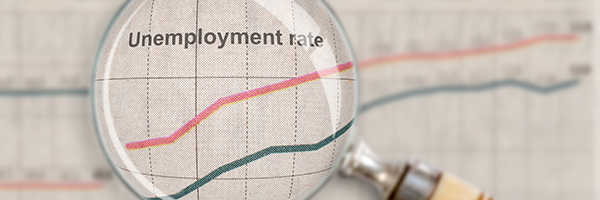
June 28, 2023 | Daily JAM, Short Term |
Investors and traders have been riding a Goldilocks market that has rested on a belief that all news is good news. There are signs that belief is facing challenges that might, just might, lead to a replacement of Goldilocks with some other narrative. Right now, the golden child is still resting peacefully at the Three Bears’ house with a stomach full of “just right” porridge, but sentiment in the last week has at least been willing to countenance the possibility that some bad news is bad news. And, I can see a lurking suspicion in the market that may be in the weeks to come all news if bad news.

May 24, 2023 | Daily JAM, Mid Term |
We all know that a continued standoff on the debt ceiling would be bad for the U.S. economy and financial markets. But even a deal along current lines is going to cost jobs–lots of jobs–and take a bite out of economic growth, according to Bloomberg Economics Spending cuts expected in an eventual deal to raise the U.S. debt limit could cost the country as many as 570,000 jobs and make the recession projected by Bloomberg Economics even worse.

May 12, 2023 | Daily JAM, Mid Term, Morning Briefing |
It’s only a survey of consumer sentiment so it’s not very important to the financial markets, right? Wrong. The University of Michigan survey of consumer sentiment for May illustrates perfectly the trap that the Federal Reserve is caught in right now.

May 11, 2023 | Daily JAM, Morning Briefing |
The Producer Price Index rose 0.25% in April from March and at a 2.3% rate year-over-year, the Bureau of Labor Statistics reported today, May 11. This index measures prices at the wholesale level–changes at that level eventually show up in the prices that consumers pay so they’re an indicator of the direction of future consumer inflation. Economists surveyed by Bloomberg had expected producer prices to rise 0.3% in April on a monthly basis and 2.5% on a yearly basis. In March, producer prices slipped 0.5% on a monthly basis and rose 2.7% on a yearly basis. The annual 2.5% rate is the lowest annual increase in producer inflation in more than two years. So in these numbers, we’ve got clear evidence that inflation is falling. But, also this morning, initial claims for unemployment for the week ending May 6 rose 22,000 to a seasonally adjusted 264,000 claims. That was above expectations from economists surveyed by Reuters for 245,000 initial claims for unemployment. The number of workers filing new claims for unemployment hit a 1-1/2-year high.

May 10, 2023 | Daily JAM, Morning Briefing |
CPI inflation ticked lower in April with the all-items (headline) inflation rate nudging down to a year-over-year 4.9%. The core rate, which excludes food and energy prices, also slipped lower to a year-over-year 5.5% from a 5.6% rate in March. On a month-to-month basis all-items inflation rose by 0.4% in April from March after a 0.1% gain in March. The core rate rose 0.4% in April after rising 0.4% in March. If you were looking to have this morning’s inflation report settle the argument on when the Federal Reserve would pause its interest rate hikes, this report didn’t deliver. The most likely Fed reaction to this data would be a pause at the June 14 meeting that left the Fed’s benchmark short-term interest rate at the current 5% to 5.25% range. The CME Fed Watch Tool, which tracks prices in the Fed Funds Futures market, calculates that market participants believe that the Fed will hold rates steady at that meeting. Odds are 93.9% on the Fed Watch Tool in favor of no change in rates at the June 14 meeting. I can see the logic of that.

May 4, 2023 | Daily JAM, Morning Briefing, Short Term |
Initial claims for unemployment rose by the most in six weeks while continuing claims fell in the week ended April 29, the Labor Department reported this morning. Initial unemployment claims rose by 13,000 to 242,000. Economists surveyed by Bloomberg were looking for 240,000 initial claims. Continuing claims, which include people who have received unemployment benefits for a week or more and are a good indicator of how hard it is for people to find work after losing their jobs, fell by 38,000 to 1.81 million in the week ended April 22. That marked the biggest drop since July. If you think that a rise in unemployment and a weakening of the labor market is a good thing, as the Federal Reserve does, because it sets the stage for a decline in inflation, then today’s data had its negative aspects too. A separate report out today showed U.S. worker productivity declined in the first quarter by more than forecast and labor costs accelerated. That’s a strong argument for higher inflation.

April 24, 2023 | Daily JAM, DIS, Mid Term |
Layoffs aren’t just for technology companies right now. Disney (DIS) has begun the second round of a projected three rounds of job cuts that will add up to a total reduction of 7,000 employees this year.

April 22, 2023 | Daily JAM, Short Term |
I expect to see the growth economy’s last stand when the Bureau of Economic Analysis the Advanced Estimate of first-quarter GDP on Thursday, April 27. The Atlanta Federal Reserve Bank’s GDPNow forecast predicts that the U.S. economy grew at a 2.5% real year-over-year rate in the first quarter of 2023. That would be roughly equal to the revised 2.6% growth rate in the fourth quarter of 2022. Which would be great news if projections from economists didn’t show growth turning negative in the second and third quarters. The growth estimate for growth for all of 2023 is around 0.4% (the Federal Reserve) or 0.3% (Goldman Sachs.)

April 10, 2023 | Daily JAM, Videos |
This week’s Trend of the Week is Houston, We Have a Trend Problem. The problem with trends is that the data is always old. There is always a lag. Inflation numbers for March will come out on April 28, jobs numbers for March came out on April 7, and GDP first quarter numbers will be in around April 27. These month-old numbers tell us where we’ve been, but we need to know where we’re going–and importantly, the speed at which we’re moving. It’s not just the trend, it’s the momentum of the trend. Inflation is undoubtedly coming down. What we don’t know is how the combination of Fed actions, a slowing economy, and the banking crisis are affecting inflation and economic growth. Currently, core inflation numbers are around 4.5%, and the Fed still wants those numbers closer to 2%, but for how long will the Fed continue to raise rates, and how close will the central bank actually get to 2%?m All that is still up in the air. At the time of filming, the consensus (56%) was that the Fed will raise rates another 25 basis points in May, and then pause. The decision is data-dependent, but the problem with that is that the data right now is all past data. The data doesn’t show real-time momentum. Forward-looking data doesn’t actually exist, but boy, would it be great if it did!

April 10, 2023 | Daily JAM, Mid Term |
U.S. households project that inflation a year from now would stand at 4.7%, versus February’s 4.2%, according to the most recent survey from the New York Federal Reserve Bank. This was the first increase in year-ahead expected inflation since October.

April 7, 2023 | Daily JAM, Morning Briefing, Short Term |
U.S. payrolls rose by 236,000 in March. That was in line with forests from economists surveyed by Bloomberg. (The Bureau of Labor Statistics revised its February report upward to show 326,000 jobs added in that month.) The official unemployment rate slipped to 3.5% from 3.6%. Average hourly wages increased at a 4.2% rate year-over-year. That was below estimates and the slowest growth since June 2021. The lower total for new jobs in the month is better than a poke in the eye with a sharp stick for investors hoping that the Federal Reserve will decide its job is done and end its interest rate increases after one final 25 basis point increase at the Fed’s May 3 meeting. But the market read today was that the drop isn’t big enough to convince the Fed.

March 25, 2023 | Daily JAM, Mid Term, Morning Briefing |
Goldilocks is just about the only thing keeping the current stock market afloat in the face of a storm of worry from a banking crisis, to stubbornly high inflation, and signs of a cooling economy. The Goldilocks story says, Don’t worry about all that. The Federal Reserve is about to pivot on interest rates. At its May 3 meeting, the Federal Reserve Open Market Committee might raise interest rates by 25 basis points but that will be the last interest rate increase. And then the Fed will move to start cutting interest rates in the second half of the year with financial markets pricing in as much as 200 basis points of cuts by the end of 2024. And all this will happen, too, without a recession, as the Fed engineers a successful soft landing of the economy and a significant slowdown in inflation.
If you believe that, you should be buying stocks. I don’t believe it. And more importantly, the bond market doesn’t believe it.











